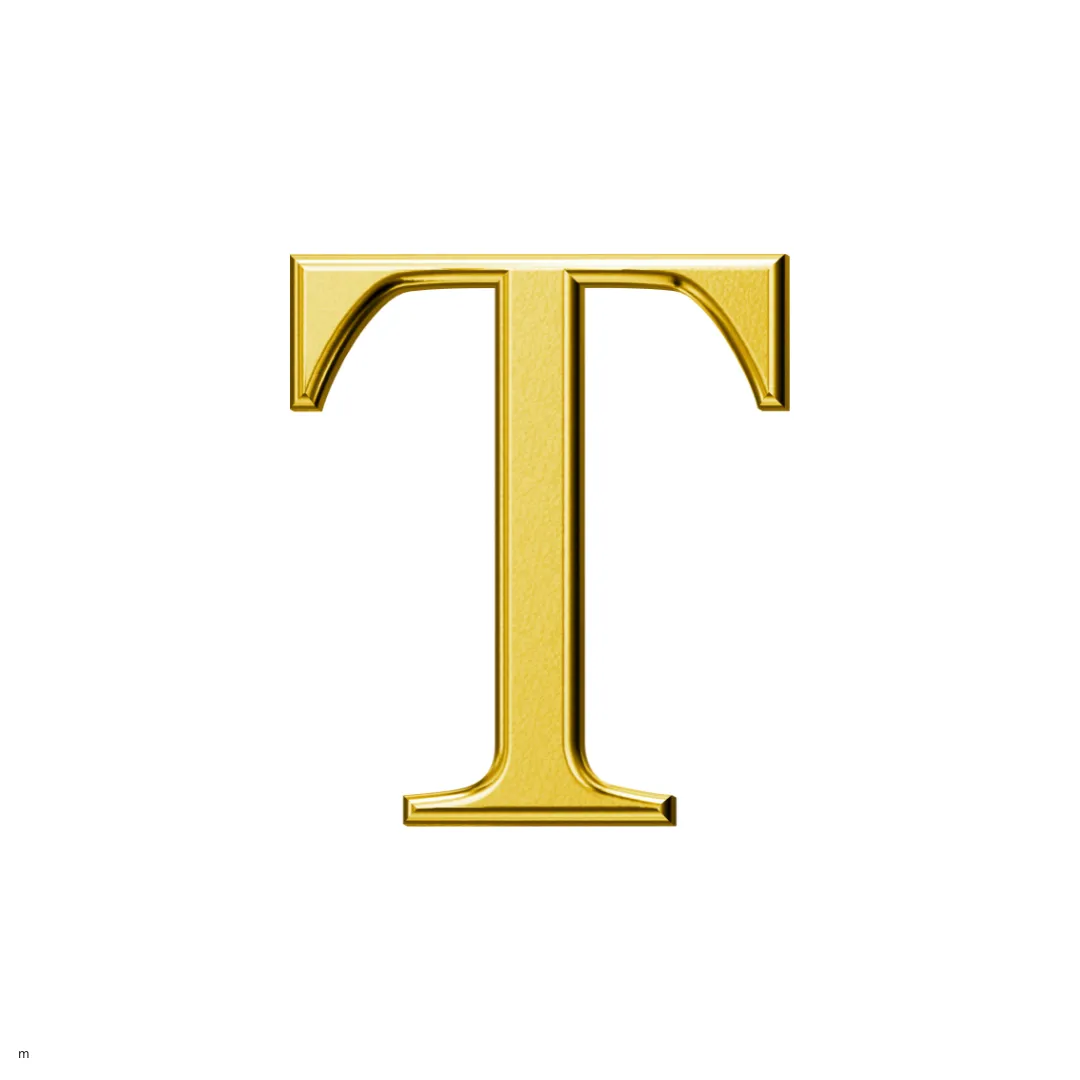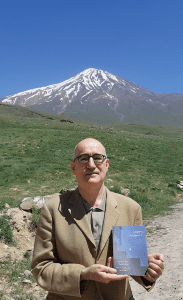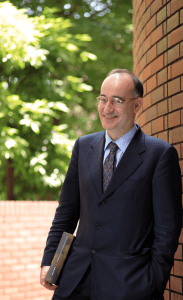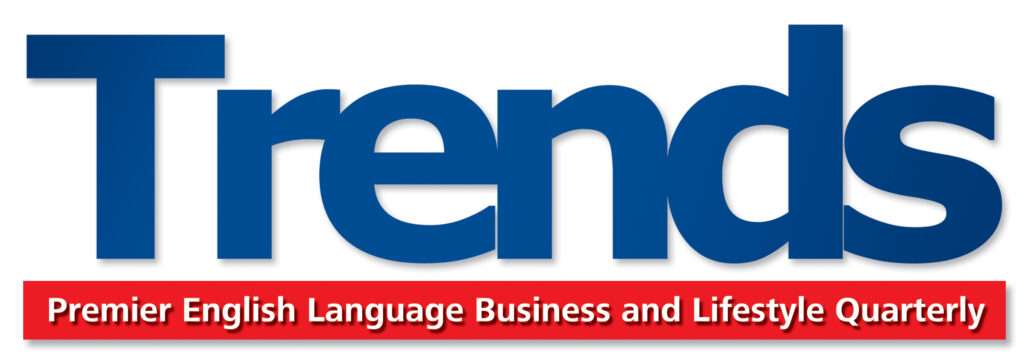By: Trends Editorial Team
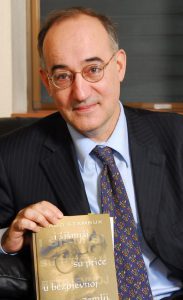 Drago Štambuk, was born in Selca on the Adriatic Island of Brač. He specialized in internal medicine, subspecialized in gastroenterology and hepatology, and completed his postgraduate studies in experimental biology. In 1991, he was appointed plenipotentiary representative of the Republic of Croatia in the United Kingdom and Head of the Office of the Republic of Croatia. Since January 1995, he
Drago Štambuk, was born in Selca on the Adriatic Island of Brač. He specialized in internal medicine, subspecialized in gastroenterology and hepatology, and completed his postgraduate studies in experimental biology. In 1991, he was appointed plenipotentiary representative of the Republic of Croatia in the United Kingdom and Head of the Office of the Republic of Croatia. Since January 1995, he
has held posts as Ambassador of the Republic of Croatia in India, Egypt and number of Arab countries, Japan, South Korea, Brazil, Colombia, Venezuela and since 2019 in Iran. He is an author with over 70 books of poetry, essays, anthologies, linguistic dictionaries, and translations as well as around 40 medical papers published in international scientific journals. Drago Štambuk has received numerous national and international awards and acknowledgements in the fields of arts, literature and linguistics, as well as for his engagement in peace-promotion activities.
Trends this exclusive interview despite your busy schedule, we are very grateful.
Please tell our readers about Croatia, its history, people, art, culture and economy, as well as its natural beauty and tourist attractions.
This is too short a question for such a long answer about friendly Croatian nation. Starting with symbols, the Croatian national anthem is the first ecological hymn in the world, which names the country’s natural beauties (Lijepa naša meaning ‘’our beautiful one’’ in English). Tie, which is now our national item, has been invented by the Croats.
Croatian people settled on the Adriatic east coast from the Persian Empire. A small nation in one of the most geopolitically important locations, where the Mediterranean enters the European continent, Croatia has always been the subject of invasions and occupations, constantly defending itself and its independence since medieval times, until the recent bloody break-up of Yugoslavia.
Croatia acquired its independence in the defensive Homeland War of the 1990s, which was extremely damaging, with some cities like Vukovar totally destroyed by the Serbian forces. Soon after, Croatia joined the UN, the European Union, and NATO. This year we entered the Schengen Area and adopted the Euro currency.
It is home to a strong shipbuilding industry, IT unicorn companies, towering figures in science like Nikola Tesla and Rugjer Bošković, great travelers like Filip Vezdin and Marco Polo, also rich literature and poetry with figures such as Marko Marulić, Miroslav Krleža and Ivo Andrić, to name a few. Croats are also very good at sports, especially football and rowing. Croatia is one of the most sought-after tourist destinations in the world. It is a historical country with many beautiful cities like Dubrovnik, the Roman imperial city of Split and the capital Zagreb, the sapphire blue Adriatic Sea, 1200 distinct islands, rivers, forests and mountains; with many national parks and UNESCO heritage sites. We have fantastic and varied cuisine, extremely rich biodiversity and climate with Mediterranean, central European, Pannonian and Balkan features. With only 3,8 million inhabitants, Croatia gets about 22 million visitors every year.
Linguistic and historical evidence suggests that Croats originated from the Persian Empire and spoke a language related to Persian/Farsi. Is that true? If so, how would you describe the two countries’ woven roots?
Old Croats lived in Harvatia (Harahvatia, Greek Arachosia), the area that is now called southwest Afghanistan, along Helmand River and around Hamun lake. Their king Vivana was an ally of Darius the Great and the chief of his army, which is visible in their procession in Apadana’s Stairs of Nations in Persepolis.
Croats were Zoroastrians, but did not abide by the religious rules, which is why prophet Zarathustra criticizes them in Gathas for burying their dead instead of exposing them to vultures on the towers of silence. Zarathustra in Gathas also refers to Harvatia as a beautiful land rich with waters and ruled by goddess Anahita. The name of my nation, Hrvat, is an ancient Iranian word, as well as the name for the Croats’ leader, ban, which means custodian or protector in Persian.
In Bisotoun, hovering above Darius the Great’s deep relief, Ahura Mazda points to three parallel texts in Akkadian, Elamite and Old Persian, naming kingdoms of this vast Empire, one of which is, as already mentioned, Harvatia or Arachosia. Thousands of words in Old Chakavian, one of the three recognized Croatian languages, are just the same or very similar to Persian. When offered a yellow fruit called zardelu in Kashan, I realized that on my native island of Brač, the fruit is called zardelija. The checkers, red and white, on the Croatian national shield or the coat of arms comes from this region and there are many of them in your Tehran National Museum.
The šahovnica (chessboard) has been the symbol of Croatia for many centuries. Please tell us more about the distinctive red-and-white checkerboard design which Croatia is known for (where it came from, what its significance is etc.?).
As I already said, the Croatian checkers traces its roots back to the Iranian realm. Persians are the only nation that assigns colors to locations, naming west white, south red, north black, and east green or blue. There was first western White Croatia in what’s today Ukraine or Poland. After moving south Red Croatia was established along the Adriatic sea coast.
Croats were invited by the Bizantyne Emperor Heraclius from the European north to defend his Empire from Avars. After Croats’ victory, the emperor gave them the most beautiful land along the east Adriatic coast as a sign of gratitude.
The chessboard is a celebration of the fact that my nation excels in warfare, though always defending and never conquering other countries. Having witnessed the bravery of the Croatian people, Napoleon once said that he could conquer the world if he had 100.000 Croat soldiers.
From being a diplomat to a poet, physician and even a country branding strategist! You were elected a full member of the Croatian Academy of Sciences and Arts in the Department of Literature. You also published more than 70 books of poetry, essays, anthologies, linguistic dictionaries, and translations as well as authoring around 40 medical papers published in international scientific journals. Please tell our readers about your wide range of talents, interests and activities and how you manage/ balance them all.
Poetry is an important part of my inner self. God gave humans languages, and poets have been blessed with a talent to use words to express their thoughts better. I believe writing poems is a sign of gratitude to the Almighty, who has given us talents and wants us to use them for the benefit of ourselves, our communities and nations. What drives me to do things is an overwhelming sense of duty and a wish to be creative and do good.
You authored a book of poems called “Damavand, from the Other Side of the Sea”. Please tell us more about that and what it represents. Did living in Iran inspire you to write these poems?
Iran is a very inspirational country with its ancient and glorious past, beautiful works of architecture, splendid nature and great literature. The spiritual and mystical inclination of your artists is unsurpassed on earth. During the last few years, Iran and its features have entered my poetry, so has Damavand and its eternal beauty.
For me this mountain, which is a dormant volcano, is the core around which whirls your history, with such figures as Shahname heroes like Siavash, Arash and Kaveh. I can imagine Zarathustra walking on its slopes in his white robes with his glorious message from Gathas about good thoughts, good words and good deeds echoing even today and strengthening our tired hearts.
You are the author and lifelong promotor of the “Golden Formula of the Croatian Language ‘ca-kaj-što’. You are also creatively branding your country, Croatia. How did you get into that field of activity and what was the outcome?
Being on good terms with words and seeing things clearly helps in branding even a nation or country. Yet, your love must be genuine because you can’t sell fake premises. With my beautiful and unique Croatian language which has a tripartite nature made up of the three languages of Chakavian, Kajkavian and Shtokavian, and to unite Croatia linguistically and politically, I have coined and for most of my life promoted the so-called “Golden Formula of Croatian Language ča-kaj-što” using the local words for the interrogative pronoun “what”. On my proposal and after years of striving for its acceptance, the Golden Formula was finally declared a cultural good by the Ministry of Culture and placed on the National list of protected intangible heritage in 2019. Since then, all the three distinct languages are supposed to be treated equally, with dignity and decorum.
With Mother Tereza in Calcutta, at her home, giving her
Croatian passport and the highest Croatian decoration on her
birthday in 1995.
Croatia has recently joined the Schengen zone and has replaced the currency (Kuna) with Euro. What does it mean for the Croatian economy, business community and people?
It means that we are now anchored in the heart of Europe’s unity and guarding the southern flank of the European Union. Other Schengen countries do not need visas for Croatia anymore, so it’s easier to travel in both directions, which also benefits economy. There is no necessity for money exchanges and life seems easier in the wider context. There are of course drawbacks, like giving up control of your currency.
From Tomislav Ivic to Miroslav Blaževic, Branko Ivankovic, Zlatko Kranjcar and Dragan Skocic (who qualified Iran to the Qatar 2022 world cup), the Iran national football team has been heavily influenced by the football doctrines of Croatia, with Croatian managers dominating the Iranian football scene for years now. Tell us about the two countries’ cooperation and exchanges in football and why that is. What do you think of the Croatian incredible soccer World Cup success since its independence?
As I have already said, Croats are talented at sports, and especially in team sports. When physical aptitude is combined with love for one’s country, the results are obvious. It’s also important to say that the Croatian Zoroastrian mentality fits well with the Iranian ancient mentality, and therefore Croatian coaches understand Iranian mindset very well.
How would you summarize the state of affairs between Iran and Croatia in terms of political relations as well as trade activities and cultural exchanges?
There is huge potential for cooperation, which has been hindered by sanctions. The enthusiasm resulting from the signing of JCPOA agreement followed by many business and political visits has been thwarted. However, I am here in Tehran to keep our bilateral optimism alive, and I hope for the revival of JCPOA and better times.
What do you see as the opportunities and challenges for Iran in 2023/4 and beyond (economically, geopolitically, internationally…)?
Adding to what I have already said, our world is in a very difficult state due to unfair pressures and wars where the slogan “might is right” dominates the geopolitical scene. However, we must be optimistic and believe in the “right is might” equation and the possibilities that the noble and fair minds can create.
How has your experience been in Iran so far (history, people, cuisine…)? Have you visited other parts of the country besides the capital? Would you recommend it to fellow Croatians?
I would certainly recommend Iran to Croatians and that is what I do every day in my work. Iran’s beauty, as well as the kindness of your incredible and resourceful people, deserves to be seen and experienced.
The highlight of my stay in Iran was when at the end of 2021 I visited Bagastan (Bisotoun), the high vertical cliff near Kermanshah, after an official visit to Hamedan (as to many other splendid cities). I had to climb up along scaffoldings, due to UNESCO repairs, being helped by some local Kurdish people. I do not remember being ever so excited in my life because I was at a sacred place for me and my nation.

